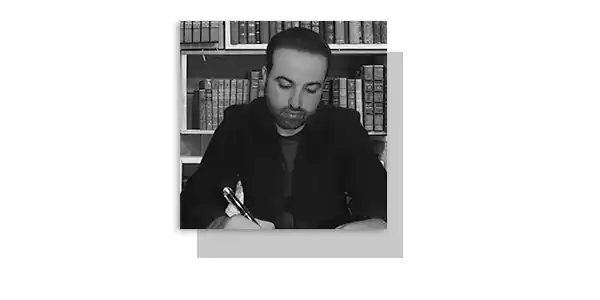ISTANBUL is a prize for those who love exploring the aggressive results of cultural metamorphism at the junction of antagonized identities. The unique aspect is the intensity of collective memory embedded in the bricks and brains of this city—drawn from the conflicting surges of culture starting from the descendants of Aeolus, Dorian Greeks, Ionians, Thracians and Persians during Palaeolithic Age, followed by the Hellenistic colonization in seventh century BCE, and then the grand empires of Romans (330–395), Byzantines (395–1204 and 1261–1453), Latins (1204–1261), Ottomans (1453–1922), to the Modern Republic of Turkey.
While trampling the well-paved highway curves dancing across the banks of Bosphorus, the shadows in the turrets of Theodosian Walls with hamlets, breastplates, spears, and amours, gazing out on the sunsets of Marmara Sea, pushed me deep down into the agony of desire splashing through the centuries of tears and cheers. This imposing structure posed an insurmountable obstacle to the waves of German, Hun, Avar, Slav, and Arab armies during the early Middle Ages, fell to the fire of Ottoman cannons on May 29, 1453 after a 53-day siege by Sultan Mehmed II who entered the captive city through The Gate of Charisius . Constantine XI, the last Roman Emperor, fought and died in the line of duty. He called this city “ the Queen of Cities, the shield and aid of our homeland, the shelter of Christians, the hope and joy of all wishes to destroy this city, which was once proud and blooming like a rose of the field”, during his last address to the defending soldiers.
The Byzantines mourned the fall of Istanbul similar to how Turks did 466 years later, following the Armistice of Mudros, when the French General Franchet d’Esperey, then Commander-in-Chief of the Eastern Armies during the World War I, victoriously entered into Istanbul on white horse, proceeded through İstiklal Avenue, and welcomed spectacularly by Greek and Armenian minorities. Süleyman Nazif’s article titled “A Black Day” published in the Hadisat on Feb. 9, 1919 states, “We will feel this pain and leave this sadness and sorrow to our children and descendants as heritage, crying from generation to generation.” Allied Forces divided the city into unmixed regions for Russians, Balkans, Crimeans, Caucasians, Jews, Armenians and Turks.
The ethnic bifurcation of Istanbul was a conceptual forward which carved out the new republics, mandates and kingdoms in the modern Middle East. Erdağ Göknar states the period “a crucible out of which nurtured the modern Turkish subject in crisis between poles of Islam and state, tradition and modernity and City and Nation.” Kamal Ata Turk was the spearhead of this transformation. Mustafa Kemal defied the Treaty of Sèvres and started an armed struggle against both the signatories—the Sultan and the Allied Powers. He pushed Armenians back from south-eastern Anatolia and Greeks from Izmir and Thrace, signed the Treaty of Lausanne, regained Istanbul on Oct 2, 1923, abolished the Ottoman Dynasty, and turned Turkey into a modern republic.
Today’s Istanbul is charming and peaceful. The people are generally loyal, kind, energetic, authoritarian (perhaps historical narcissism works here), cautious in giving smile (perhaps due to their serious, dramatic history), with healthy body frames, sharp face features, fair-skin, blonde/black hair, green/hazel eyes, and well-defined jawlines. Turkish people love transacting in Euros and British Pounds, driving European cars but are reluctant to learn English. Their love for Euros comes from their rising inflation and their inertia against English language roots back to the memories of World War I, particularly the English-French Sykes–Picot Agreement in 1916 proposed to occupy the former Empire’s territories. Tourists come all over the world to enjoy the theatric convergence of culture and geography.
The Ministry of Tourism and Culture counts 44 564 395 foreign tourists entering Turkey in 2022 with Istanbul among their primary destinations. The airport is functionally modern and spacious. It connects with more than 350 destinations. Turkey’s tourism revenue hit a record $46.3 billion in 2022 even as its trade deficit swelled to more than $109 billion. Modern Istanbul is a perfect laboratory for architectural learners to research and solve challenges in the multi-layered transformation of an urban palimpsest amid rapidly rising population and huge tourist influx.
Istanbul keeps the visitors busy with its beautiful hilly landscape; gridlock in food markets saturated with colourful Turkish delights, Bars and cuisine dominant with meat, cheese and green salads; its diverse tourist fraternity of all colours and creeds; frenetic visits of the tourist attractions; and late-night cultural shows with lavish cruise dinners on luxury vessels thrashing through Bosporus waters. The cold waters of Black Sea pooled by the mighty Russian and the Middle-European rivers of Danube, Don, Dnieper, and Dniester thrust southward through Bosporus whereas the cozy Mediterranean currents drift towards north through its elongated embayment, The Aegean Sea, pass through the inland Marmara Sea, and strike the same Bosporus making it a living experience with subtropical climate moderated by cold northern winds. Asia Hugs Europe across this 19-mile long water channel with a maximum width of 2.3 miles at the northern entrance and a minimum width of 750m between the Rumelian Castle and Anatolian Fortress.
The ancient Theodosian Walls, Hagia Sophia, Blue Mosque, Topkapi Palace, Balumche Palace, collectively designated as UNESCO World Heritage site in 1985, loudly narrates the 2500-year old saga of imperial grandeur, romance, art, religiosity, architectural aesthetics of the bygone emperors, the intensity of their love for Istanbul, but whispers at the same time the compounded sadness integral to the beauty of this Queen of Cities. These structures outlived and still stand in the heart of modern-day Istanbul in retrospect of the callous indifference by power and religion to the cost of their glory they paid in the form of human blood and emotions.
—The author is a columnist, academic, and travel enthusiast.









